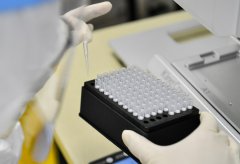New vehicles to be rated on how they make drivers stay alert
Two organizations that influence many Americans’ automobile buying decisions will begin rating vehicles on how well they track behavior of motorists who use partially automated driver-assist systems
January 20, 2022, 9:29 PM
5 min read
Share to FacebookShare to TwitterEmail this articleFILE - In this April 22, 2021 file photo, cars wait at a red light during rush hour at the Las Vegas Strip, in Las Vegas. Two organizations that influence many Americans’ automobile buying decisions will begin rating vehicles on how well they track behavior of motorists who use partially automated driver-assist systems. Consumer Reports and the Insurance Institute for Highway Safety say the ratings will factor into scores for new models starting this year. The new ratings, announced Thursday, Jan. 20, 2022 come as the auto industry struggles with how to make sure drivers stay alert as the systems take on more driving functions. (AP Photo/John Locher, File)
DETROIT -- Two organizations that influence many Americans’ automobile buying decisions will begin rating vehicles on how well they track behavior of motorists who use partially automated driver-assist systems.
Consumer Reports and the Insurance Institute for Highway Safety say the ratings will factor into scores for new models starting this year. Automobile buyers often turn to both groups to judge the safety of vehicles.
The new ratings, announced Thursday, come as the auto industry struggles with how to make sure drivers stay alert as the systems take on more driving functions. Plus, the systems are being offered in more new vehicles.
Both groups say research shows drivers often rely too much on the computerized systems, even though they cannot drive vehicles themselves. At times, the systems have made mistakes and drivers have failed to take action — with deadly consequences. Some automakers have oversold the systems' abilities in advertising, both groups said.
The organizations say they are stepping in with ratings and standards because at present there are none from the National Highway Traffic Safety Administration, the U.S. government’s auto safety agency. NHTSA said in a statement that it's researching the monitoring systems to establish benchmarks and get driver data for possible future actions.
Both Consumer Reports and IIHS hope that automakers will respond with more robust monitoring systems.
“Keeping drivers focused on the road and the vehicle is critical for the safe use of partially automated driving systems,” said David Harkey, president of IIHS, an industry group that has shamed automakers into making safety improvements with its rankings.
Partially automated systems, with trade names such as “Autopilot,” “Super Cruise," and “ProPilot Assist,” vary in levels of sophistication. Some are a combination of lane-centering technology and advanced cruise control, which will adjust speed to keep a vehicle away from those in front of it. Others can change lanes on their own. Most use cameras and some have radar sensors.
But drivers are able to ignore some of the monitoring systems, especially with Tesla, which led the industry by rolling out its “Autopilot” driver-assist system in 2015. Government officials say no self-driving cars are available for sale and that drivers must be ready to take action at all times.
For example, in 2018, a Tesla operating on Autopilot crashed into a freeway barrier in Mountain View, California, killing the driver. The National Transportation Safety Board found that the driver likely was distracted by a cell phone video game.
NHTSA has opened a formal investigation into Teslas on Autopilot crashing into emergency vehicles parked on roadways. A message was left Thursday seeking comment from Tesla.
Some companies, such as General Motors, Ford, Tesla, BMW and Subaru, have cameras that watch a driver to make sure their eyes are on the road. Others only check for hands on the steering wheel. But since there are no federal standards, some monitoring can be turned off by drivers, while others don't take enough action to make drivers pay attention, both organizations said.
There is no evidence that the driving systems make vehicles safer, and research shows they could be less safe if the systems don't make sure drivers are engaged, Harkey said.








